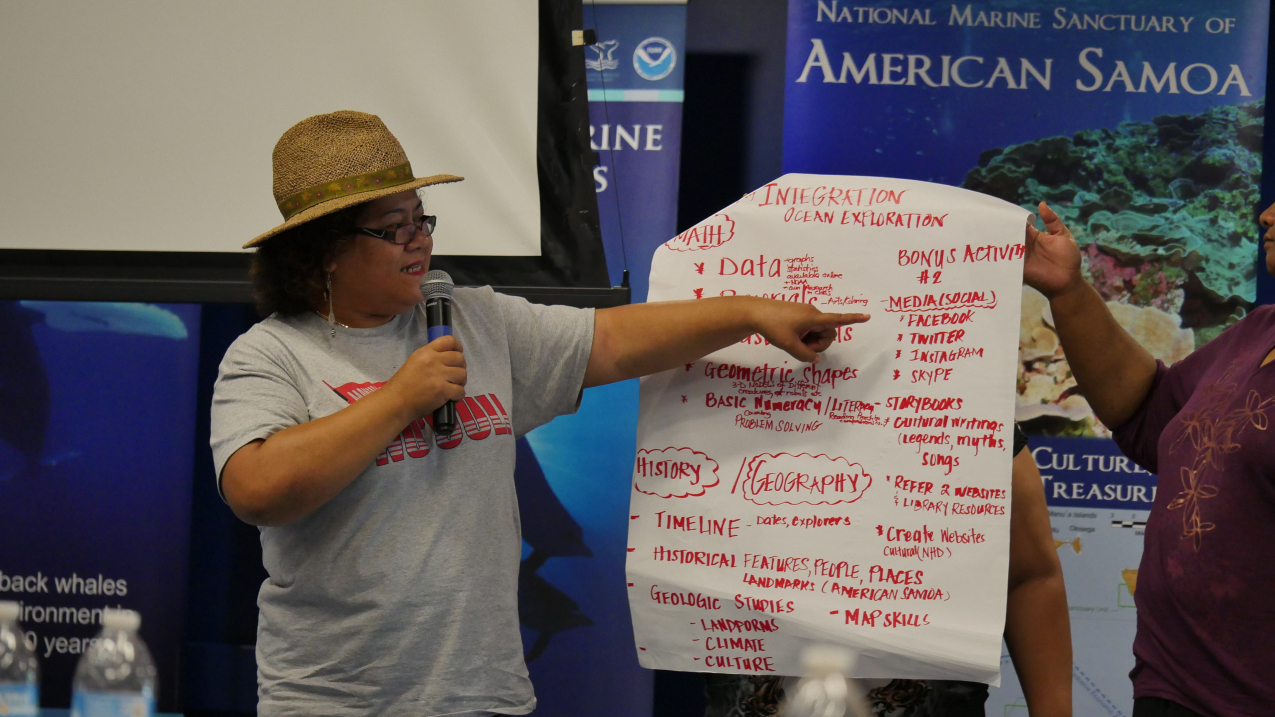It’s not every day that a research vessel visits a remote island in the middle of the Pacific Ocean. Whenever the NOAA Ship Okeanos Explorer arrives in such a place, the team connects educators to the research taking place in their own deepwater backyards.

Educators participate in a communications lesson during a 2017 professional development workshop at the Tauese P.F. Sunia Ocean Center, National Marine Sanctuaries, American Samoa. (Image credit: Emily Narrow, Global Foundation for Ocean Exploration)
From July 2015 through September 2017, NOAA’s Office of Ocean Exploration and Research (OER) and partners conducted multiple ocean exploration expeditions in the Central and Western Pacific Ocean aboard the Okeanos Explorer as part of the three-year Campaign to Address Pacific monument Science, Technology, and Ocean Needs (CAPSTONE). Expeditions targeted marine national monuments and national marine sanctuaries. These unique places contain some of the last pristine marine ecosystems on the planet and harbor numerous protected species, undiscovered shipwrecks, and cultural landscapes sacred to the indigenous peoples of the Pacific.
CAPSTONE was also an important opportunity to share ocean exploration results with Pacific Islanders. In April 2017, the Okeanos Explorer docked at Pago Pago, American Samoa, after expeditions focused on the National Marine Sanctuary of American Samoa and surrounding waters. Working closely with partners in the National Marine Sanctuary System, OER hosted events to share exploration results with the local community. These events included a professional development workshop and special tours of the ship for educators. OER provided educators with new lessons based on recent exploration results and other teaching resources tailored to American Samoa. The workshop was hosted by the National Marine Sanctuary of American Samoa at the Tauese P.F. Sunia Ocean Center in Pago Pago.
Forty-five public and private school educators from American Samoa participated in an exercise designed to teach their students creative communications skills to share ocean exploration discoveries with their village elders. Educators built short presentations that shared discoveries from the 2017 American Samoa Expedition, wrote stories and songs, and created new games to highlight recent findings and the excitement of exploring the deep ocean in the Central Pacific.
The participants also incorporated the importance of communicating Samoans’ unique relationship with the sea based on the living tradition of Fa’a Samoa (the Samoan way). By maintaining the vibrant traditions, values, and legends that connect the Samoan people to the land and sea, the local community plays an integral role in protecting and preserving natural and cultural resources.
These activities expose educators in remote locations to NOAA and ocean exploration, increase their appreciation and understanding of the deep water ecosystems of their region, and help them share authentic, current ocean science with their students, creating a bridge between sacred traditions and modern ocean exploration.
This story was originally published as part of the 2017 NOAA Education Accomplishments Report.



